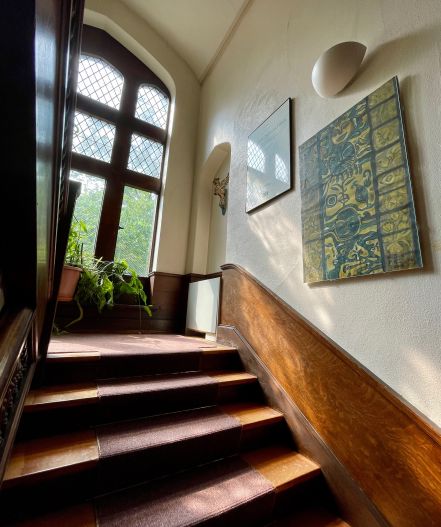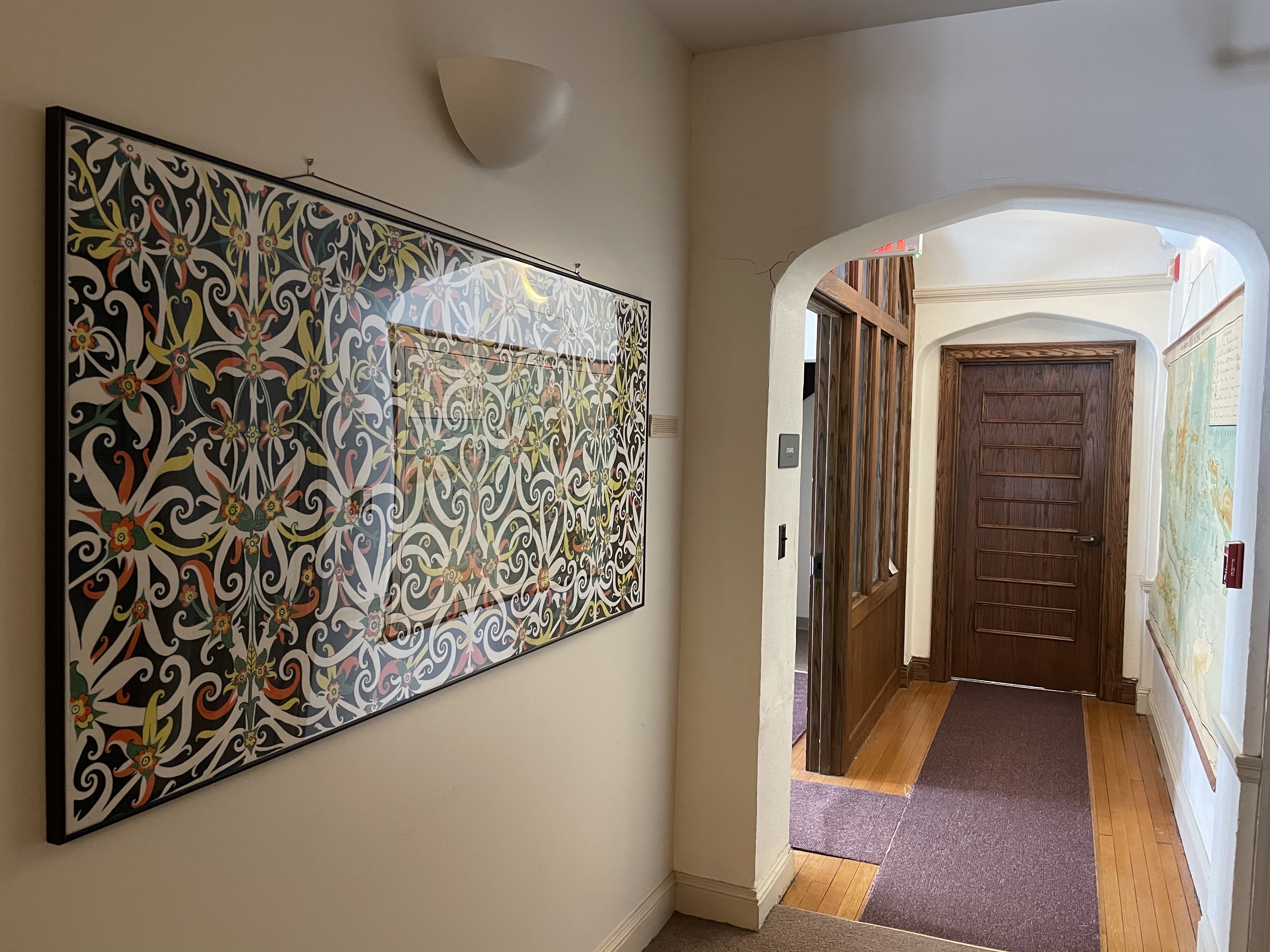A Visual Tour of Art in the Kahin Center

by Alexandra Dalferro, PhD candidate in anthropology
As featured in the Fall 2021 SEAP Bulletin, Alexandra takes us on a visual tour of art in the Kahin Center with fun historical facts and gorgeous images.
During the pandemic when the Kahin Center was closed indefinitely, I entered quickly a few times to look for books that I had left in my office on the second floor. After climbing the creaky front stairs, I always paused for a moment to appreciate the Dayak painting by Jok Bato that was made in 1973 and acquired by Carol Rubenstein while she was researching oral literature in Sarawak, Malaysia. The painting features the “Tree of Life” motif that is often found in Dayak art, and it represents the constant intermingling of all forms of life.
Rubenstein was a scholar at the Kahin Center from 1992 to 1993, and as she reflected on the culture shock she experienced each time she returned to the U.S. from trips abroad, she also considered how cold and desolate Ithaca winters might feel to Southeast Asian visitors. Rubenstein thus hoped that this glimpse of verdant jungle tendrils would help all those who pass through Kahin to feel more “at home.” My time with the painting was a warm refuge when I missed gathering at Kahin for talks and events and ensconcing myself in an office to write.
Now that the Kahin Center is open again, I examine its interior with eager, fresh eyes, enjoying its carved wood panels, paintings, posters, Buddha images, maps, and sculptures. The art that fills the Kahin materializes SEAP’s history and the lives and interests of the individuals who have shaped it. Some works have been donated by SEAP alumni and visiting scholars, like a small bust of the Thai radical Chit Phumisak (1930-1966) given to Kahin by historian Charnvit Kasetsiri (PhD Cornell 1972). Chit sits on a shelf in the large meeting room and listens intently to Gatty lectures.
Art historian Nora Taylor (PhD Cornell 1997) gifted the striking gouache painting, “Faces,” by Hoàng Hà Tùng (b. 1956) created in 1994 that hangs in the front staircase, its leafy green hues extending to the row of plants that bask in the sun of the nearby window. Taylor got to know Tùng during her research in Hanoi, and he was trained as a set designer and worked in folk theatre (hát chèo), which he also uses as a subject for many of his paintings. Taylor recalls Tùng’s sense of humor and notes how his paintings are “rich with expression and deep observation about human nature.”
Some pieces at Kahin belong to the Johnson Museum of Art, and some have been gifted or are on loan from SEAP faculty members, like the Chinese propaganda banners acquired by Thak Chaloemtiarana at the Salt City Antique Show in Syracuse. Other displays are more ephemeral; graduate students enjoy decorating their offices with photographs from fieldwork that they might gaze at for encouragement during long nights working on dissertation chapters, or they cover their desks with vibrant printed batik cloths or hang reproductions of favorite paintings and prints that they can turn to for pleasure and inspiration.
In Room 212, a graduate student office, drawings of monsters used in the short film Kahin’s Last Scare directed by anthropologist Emiko Stock (PhD Cornell 2019) keep company with a Balinese painting depicting a scene from the Ramayana donated by SEAP alumna Donna Harvey (PhD Cornell 1974) and a temple rubbing of Angkor Wat. These works are a bricolage of media types, time periods, moods, and sensibilities, and they capture the dynamic spirit of the Kahin Center and its art.


